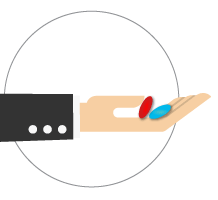Every so often, an idea goes from concept to development, to reality, before eventually becoming a standardised institution.
Take for example, the LCD monitor, just over a decade ago, this new technology was revolutionary, it came to market and after a slow start, eventually was adopted by all, but at what implications? Well, just ask the CRT monitor.
The arrival of the sleeker, improved LCD screens meant that the CRT no longer had a place in our offices and was now destined to be nothing more than landfill or ironic hipster decor.
This idea of newer innovations destroying older technology is what is known as disruptive innovation.

The new old
Disruptive innovation is an innovation that creates a new market, before eventually devaluing and displacing an existing technology.
The theory was coined by Harvard-educated Clayton M. Christensen in 1995, who used the disk drive industry (with its rapid generational change) as an example of technology being replaced by newer, more innovative developments.
For more examples, you could look at Wikipedia displacing traditional encyclopedias, or, to go even further back, agriculture replacing the process of hunting.
A disruptive innovation aims to harness new technologies and build new business models by exploiting old technologies, but in new ways.
Christensen contrasted disruptive innovation with the theory sustaining innovation, which is simply the process of improving existing products. The two theories together pose an interesting question to business owners, which model do you adopt?
Choose a pill
On one hand, you can choose to carry on with your existing product by doing the same thing, but just a little bit better. On the other hand, you can invest in new technology and capture new markets by adopting new business models.
Think about legacy telecommunication companies back in the 90s, they could continue to improve their current point-to-point data service, or they could switch to a disruptive innovation, like Voice over IP. Either choice is not without risk though.
A disruptive innovation like VoIP could not immediately command a high price due to the new and sometimes raw technology. Major refinements were required over a long period of time before it was considered a serious threat to the social norm.
However, that phase passed and it is now, with unified communications, reshaping the entire telecommunications industry, with early adopters reaping the rewards.
So do you stick, or do you twist? If you’re a big enough company, then I suppose you can do both. Fail to adapt at the right time, though, and it could be Goodnight business, just ask Blockbuster.
The emergence of video streaming, adopted by services such as Netflix, completely displaced the video store, killing it almost overnight.
Disrupted future
So as we can see, innovation quite often destroys, as much as it creates, creating a lovely risk reward system for those that wish to take the initiative.
If I was to hazard a guess, I would suggest that technologies such as 5G and IPV6 will ask some serious questions to telecommunication providers in the next 5 years, with wireless connectivity continuing to improve too.
Smart devices will be all the rage, your kettle, fridge and toaster will all be controllable from your smart device. This suggests that no industry is safe. Watch your back, because innovation is coming for you.


